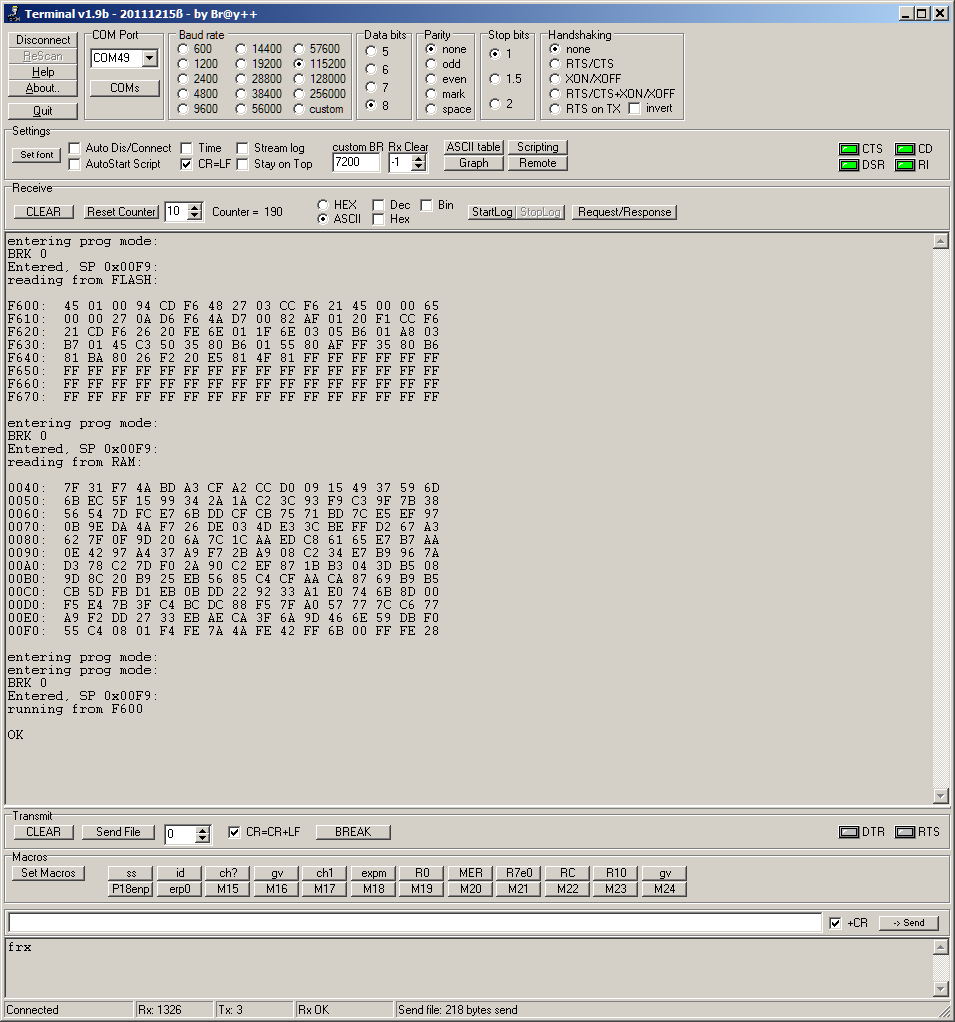MC68HC08 programmer
Another programmer project, now for Motorola/Freescale/NXP HC08, RIP
Another programmer project, now for Motorola/Freescale/NXP HC08, RIP
To make the experience fit your profile, pick a username and tell us what interests you.
We found and based on your interests.
As I stated in my project description, this project is perhaps not very useful for wide audience, though important to me, from nostalgic reasons. HC08 are dead by stupid Freescale's marketing decision, now after NXP merger it is even more dead and the only reason I'm doing this is my stock of HC08 devices as well as my memories of old days when all you needed (and actually had) to get MCU going was serial port, assembler and datasheet.
The HC08 was based on MC6805 MCU and it was based on MC6800 CPU, touching back to 70's. It keeps its "as small amount of registers as possible" architecture, familiar to 6502 users too and Von-Neumann memory arrangement, meaning RAM and FLASH in the same memory area, meaning you can execute from RAM and read "variables" from FLASH. The latter specifics was heavily used by the loading mechanism and so-called monitor mode.
By applying higher-than-usual voltage on IRQ pin the MCU listens to chosen pin to serial commands, allowng user to write/read memory and run the program, either from RAM or FLASH. To program the binary into FLASH, you load it into piece of RAM, the write fragment of executable to write the data from RAM to FLASH and execute the latter fragment to do the desired action. Sounds convoluted - and it gets worse than that, in reality :-)
I started exploring how the loading mechanism works with project bl08 from Kustaa Nyholm http://www.sparetimelabs.com/bl08/bl08.php and somehow upgraded it to support most of HC08 MCUs from my stock https://github.com/jaromir-sukuba/bl08
This is starting point to MCU implementation, as the original had one major flaw - it relied on break signal generated from serial/USB converter, which doesn't always fit the HC08 expectations. I went the "just throw MCU for low-level system, the rest is just programming" route.
Running from Cutecom in Linux - or Bray terminal in Windows.

Flashing blink a LED binary compiled by SDCC (yes, there is free C compiler for HC08) and loading via hc08prog...

More details to come.
Create an account to leave a comment. Already have an account? Log In.
Hello,
Since you are a 6808 fan, can you explain how the devices in the 6808 family relates to each other? E.g.
- MC6805
- MC6808
- 68HC08
- 68HCS08
- S08
- RS08
* MC6805 is old MCU from Motorola
* MC6808 is its successor, though it was never manufactured in NMOS version (6808), but in CMOS process (68HC08). By the way, MC68HC05 is CMOS variant of MC6805. MC68(HC)08 is improved version of MC68(HC)05, maintaining backwards compatibility.
* MC68HCS08 (=S08 shortcut), again improved version of MC68HC08
* RS08 is reduced version of S08 - some instructions are omitted and addressing space is smaller; intended for really low-end cheap MCUs
* I'm not 6808 fan ;-)
Become a member to follow this project and never miss any updates
By using our website and services, you expressly agree to the placement of our performance, functionality, and advertising cookies. Learn More
dear friend this very nice project and I am interested so can you send me more details I mean circuits diagram